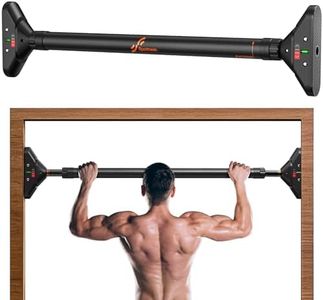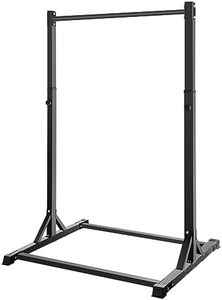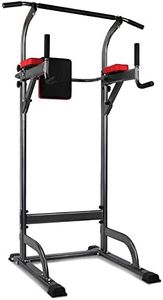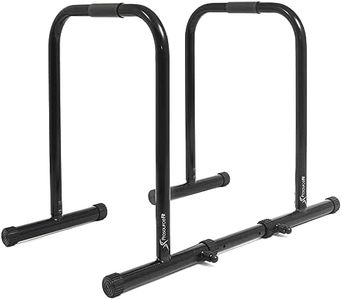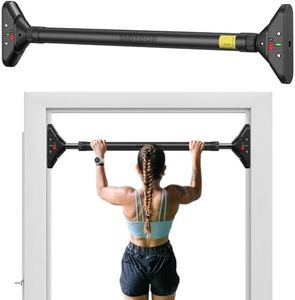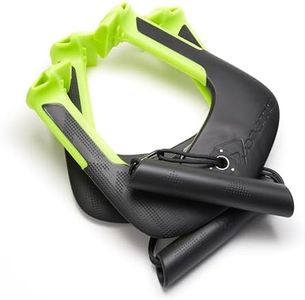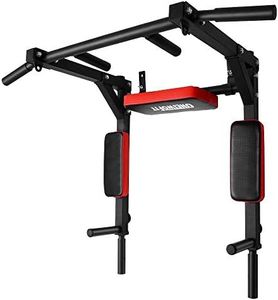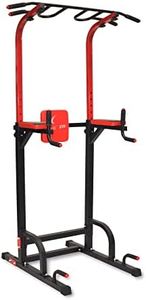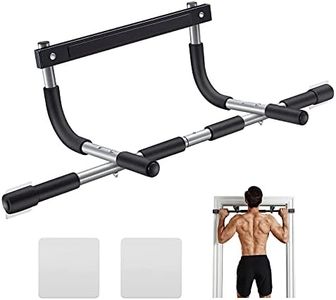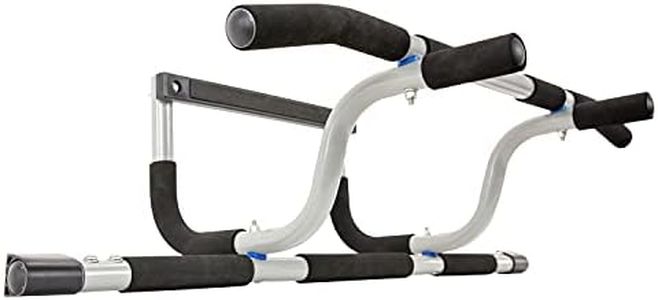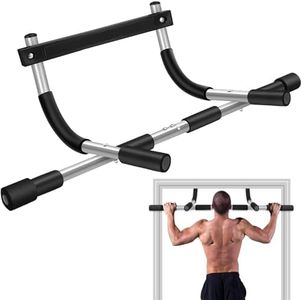We Use CookiesWe use cookies to enhance the security, performance,
functionality and for analytical and promotional activities. By continuing to browse this site you
are agreeing to our privacy policy
10 Best Pull Up Bars
From leading brands and best sellers available on the web.Buying Guide for the Best Pull Up Bars
Picking the right pull-up bar is all about understanding your space, your fitness goals, and the way you prefer to exercise. Pull-up bars come in several forms, suited for different environments and user weights, and the best fit makes your workout both safe and comfortable. When making your decision, think about where you will install the bar, what kind of exercises you want to perform, and whether multiple users will share it. Make sure to consider not just the bar itself, but also the sturdiness of your intended installation area.Type/Installation MethodThis refers to how and where the pull-up bar is mounted, such as doorway-mounted, wall-mounted, ceiling-mounted, or free-standing. It's important because the installation method determines how stable and versatile your pull-up bar will be, as well as whether it fits your space and home restrictions. Doorway bars are easy to install and remove but have lower weight limits, wall and ceiling mounts offer better stability for intensive workouts but require drilling, and free-standing bars are portable but take up more floor space. Choose the type based on your available space, whether you can alter your walls, and if you want the bar to be portable or permanent.
Weight CapacityThis specification tells you the maximum amount of weight the bar can safely hold, including your body weight and any extra weight you might add (like weighted vests). This is crucial for your safety, preventing injury and damage to your home. Doorway bars typically have lower capacities (up to around 250 pounds), while mounted and free-standing bars can often support upwards of 300 to 500 pounds. Always choose a bar with a weight limit higher than your weight, and allow for extra margin if you plan to do dynamic movements or add additional resistance.
Grip VariationsGrip variations indicate the number and arrangement of handles or grip positions on the bar for performing different exercises—like wide, standard, narrow, and neutral grips. This is important for targeting different muscle groups and keeping your workouts interesting. Some bars only offer straight or single handles, while others have multiple angles and foam padding for comfort. If you want versatility and plan to do varied exercises, look for a bar with several grip options; if you only plan basic pull-ups, a standard straight bar could be enough.
Bar Material and Build QualityThis describes what the bar is made of (such as steel or alloy) and how well it's constructed. Strong materials and good build quality ensure the bar's reliability, stability, and longevity, which is essential for safety. Lightweight materials are easier to handle but may bend over time, while heavy-duty steel bars last longer and support more weight. If you train frequently or plan to leave the bar installed long-term, prioritize sturdy construction and anti-corrosion coatings, especially in humid areas.
Space RequirementsSpace requirements relate to the dimensions of the pull-up bar and the room needed to use it comfortably and safely. This matters because too little space can limit your movement and make your workouts unsafe or uncomfortable. Doorway bars require only a standard doorway, while wall and ceiling mounts need sufficient space on a solid wall and overhead clearance. Free-standing bars need a larger open area both for the base and for movement. Measure your available space carefully, especially ceiling height, before choosing a bar, and make sure your chosen area won't obstruct doors or passageways.
